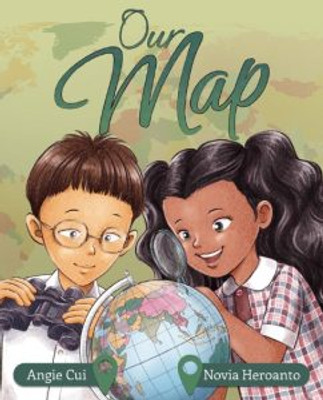Author Interview — HOPE THROUGH CREATIVITY: Angie Cui
Novel Insight on 8th Jul 2025
Angie Cui discusses the power of storytelling, inspiration behind Our Map, and how her personal experiences shaped a story focusing on identity, resilience, and cultural understanding.
What do you love about writing both fiction and nonfiction? Do you prefer one over the other?
I find both fiction and nonfiction offer unique opportunities for expression. Fiction allows me to build imaginative worlds, creating characters and stories that can resonate emotionally with readers. It's wonderful to explore themes through storytelling in a way that feels limitless. Nonfiction, on the other hand, allows me to share factual information and real-life experiences, which I find incredibly fulfilling because I get to provide valuable knowledge and insight to readers. I love that nonfiction can be educational, but fiction can be deeply personal and creative. I don't prefer one over the other, as both have their own special place in my writing journey.
What prompted you to begin publishing children’s books as someone who has many other articles published?
I’ve always had a passion for telling stories that connect with readers on a personal level, especially with younger audiences. I’ve written articles, but children's books feel like a powerful medium to instill important lessons and values at an early age. As a writer, I felt an urge to create stories that children could relate to and learn from. The chance to shape young minds, encourage imagination, and foster empathy around the themes of culture, heritage, and friendship really motivated me to start writing children's books.
What process did you use for writing children’s books?
Every story is different. Writing children's books is a different process for me compared to articles. I start by thinking about the theme or message I want to convey. Then, I focus on creating characters that children can connect with—someone they can see themselves in or empathise with. The writing itself is often collaborative in my mind, as I consider how an illustrator can bring the story to life. I try to keep the language simple and engaging while maintaining the emotional depth of the story. Feedback from my children, publisher, and other writing friends is also very valuable in refining the story.
What inspired you to write Our Map?
Our Map was inspired by the experience of hearing stories from refugees, especially children, who struggle with their sense of identity and belonging due to the loss of their homeland. I wanted to create a story that explores these themes but also shows the power of imagination and creativity in finding ways to express one's heritage. This book is also inspired by Danielle Binks' The Year the Maps Changed, which beautifully captures themes of displacement, loss, and the importance of understanding different cultures and histories. It was important to me to highlight how traditional maps sometimes leave out important histories and how we can create new narratives that reflect our diverse experiences.
Were there any moments in this story that particularly spoke to you?
One of the most touching moments in the story is when Lee realises that his parents' homeland isn’t on the map. It symbolises the deep sense of loss and longing that refugees often feel. As Lee and JJ begin to create their own map, it becomes an act of healing and a way of reclaiming something that was once lost. This moment spoke to me deeply, as it reflects the resilience and strength that children can demonstrate in facing challenges and finding hope through creativity.
Have your experiences impacted the way that you write in any way?
Absolutely. My experiences have given me a deeper understanding of the importance of representation, empathy, and the value of different cultural perspectives. Writing with these principles in mind is crucial, especially when I’m writing for children. I want to ensure that every child, no matter their background, sees themselves reflected in the stories I create. These experiences shape how I approach stories, focusing on the emotional and human connections between characters.
How did you find the process of working with an illustrator on this project?
Working with the illustrator on Our Map was an incredibly rewarding experience. Novia brought an entirely new layer to the book, helping to visualise the emotions, landscapes, and diverse cultural elements in the story. The collaboration was a partnership where we exchanged ideas and visions, which made the final result even more impactful. I was thrilled to see how the illustrations enhanced the storytelling and provided an additional layer of meaning to the book.
Do you have any other projects in the works?
Yes, I’m currently working on several exciting projects! I’m developing more children’s books that explore themes of belonging, resilience, and creativity. I’m excited about these projects and the opportunity to continue telling stories that promote inclusivity, diversity, and empathy.

